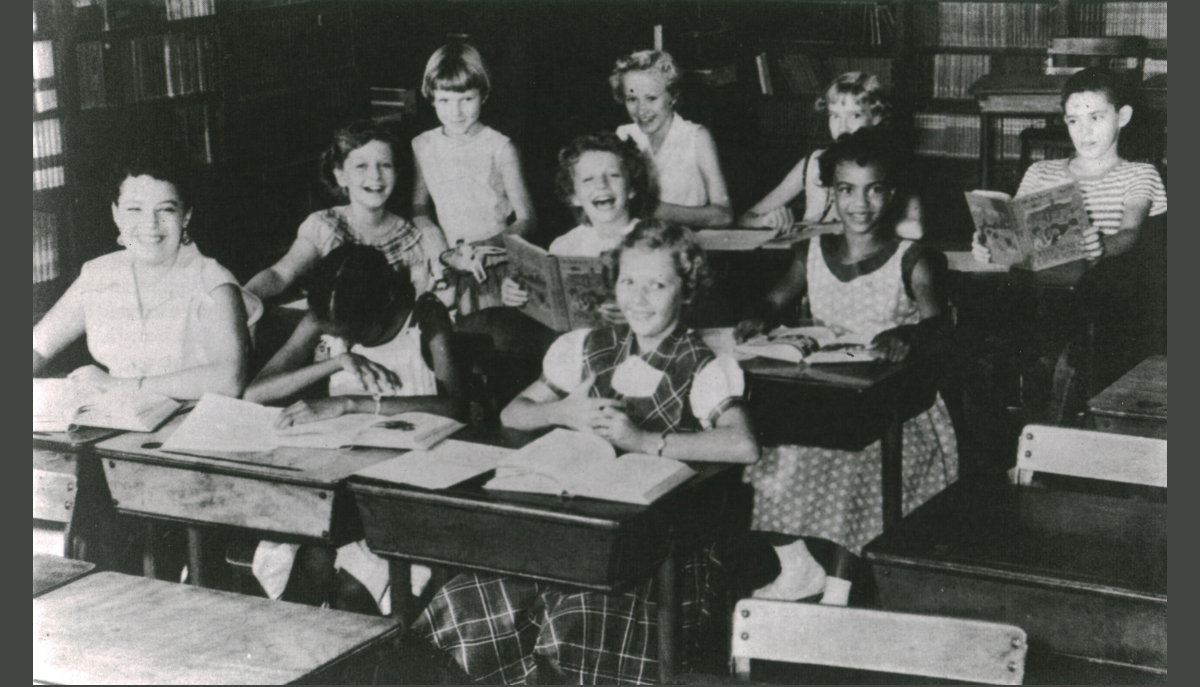Desegregating the schools seems like a simple concept: all children regardless of race being able to learn together, having the same educational opportunities. This concept was at the core of Brown v. Board of Education of Topeka, Kansas. The actual process of desegregation was not always so straightforward. Springfield Public School records state there were nothing but minor issues here. However, every individual has a different lived experience, and those who experienced desegregation may have a far different story.
Seventeen states required segregated schools prior to Brown v. Board of Education of Topeka, Kansas, and four others allowed it in some cases or did not forbid it. The Missouri Constitution required segregated schools starting in 1875. On May 17, 1954, the legality of seventy-nine years of mandated segregated school in Missouri was overturned by the U.S. Supreme Court. However, a statement on implementation was not issued. The U.S. Supreme Court would take another year before issuing the statement that desegregation was to take place with “all deliberate speed.” Legally, the phrase is accepted to mean without delay, but the vagueness allowed districts to delay implementation.
The Springfield Public School Board decided not to wait. A mere three months after the initial verdict, Springfield Public Schools began desegregation. For the first time, Black students could attend the school associated with their residence. Those students also had the option of staying at Lincoln for one last year. More than half, including the entire sophomore class, decided to transfer.
Desegregating the students was only part of the story. Over 38,000 Black teachers lost their jobs in southern and border states when the schools desegregated. The percentage of Black educators has never recovered. It is estimated that between 30% and 50% of teachers in states that mandated segregation were Black. The current percentage for those states is approximately 7%.
Springfield’s Black teachers did not lose their jobs, but that does not mean they were retained as classroom teachers. All of the Lincoln teachers had college degrees, with four holding master’s degrees. Most had been teaching for many years.
The placements for the 1955-56 school year did not necessarily reflect the teacher’s education, skill, and experience. Lincoln teachers were used to fill appropriate openings. However, where no openings existed, white teachers seemed to have kept their positions regardless of experience, degrees, skill, etc. In subsequent years, many of the teachers ended up in more appropriate placements. Roberta Bartley, Elise Bailey, and Leona Reed became elementary specialists. Each elementary school would have a specialist for approximately a month during the year. The specialists worked with small groups of students who were struggling.
Mary Tolliver and Florence Thompson taught at Jarrett Junior High. Juanita Bland and Olive Decatur taught at Pipkin Junior High. Barbara Tolliver and Frances Douglas taught at Reed Junior High. Gerald Hutton taught at Study Junior High. Daisy Jenkins, who had been the librarian at Lincoln, stayed at the building and was the librarian at the new Eastwood Junior High.
Leola Herndon taught Social Studies at Springfield High School. Goler Collins, the principal at Lincoln, was offered a position at Study Junior High but moved out of state to take a college teaching post. Cordia Penn, who had been the Home Economics teacher at Lincoln for many years, became the assistant to the Home Economics Coordinator. John Hughes became an assistant in the athletic department. Gerald Brooks, who had directed the award-winning Lincoln High School Band and held a master’s degree from the University of Illinois, was made the music secretary.
Desegregating the schools was a win for equality and educational opportunity, but many of the teachers had to try to get back the positions they so richly deserved in the new integrated schools.
By Joan Hampton-Porter
Curator, History Museum on the Square
historymuseumonthesquare.org
417-831-1976





